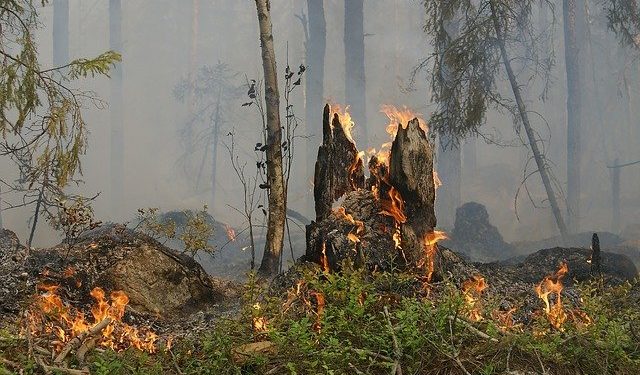Change of approach on day six of this fire follows mounting criticism
A press release issued today shows authorities have started listening to criticism of the firefighting ‘strategy’ used this far in the blaze that started in the early hours of Saturday and has already destroyed 10,000 hectares of often unique countryside within the Serra da Estrela national park.
Mayors of both Manteigas and Gouveia have not held back over the perceived shortcomings at play – the latter stressing yesterday that the whole drama “is filled with surreal facts”.
Three Canadair water-bombers leased by Portugal are ‘inoperational’, for example – just when they could make all the difference; while techniques adopted have relied heavily on what is known here as ‘tactical fire’ – the setting light of certain areas in order to ‘meet’ advancing flames and (theoretically) stop them from going any further.
As critics have repeatedly stressed, the use of ‘tactical fire’ in a natural park has to be taken with great care – something they clearly believe has not been the case.
This is the largest fire so far this year – and it is STILL blazing, after six days of firefighting, and the involvement of record numbers of firefighters.
Today’s press release diplomatically refers to “dialogue regularly maintained by the ministry of interior administration with mayors”, and takes pains to say that both the government and national Civil Protection authority (ANEPC) see the importance of ‘permanent information’ being given mayors as “fundamental”.
Meetings involving all parties have been ongoing for days – and “in the meetings of yesterday and today situations were identified which, from the operational point of view and given the characteristics of the fire could require adjustments, which are now the object of evaluation”.
This is as close as it gets to the government/ authorities acknowledging tactics up till now may not have been working quite as they had hoped.
Considering the massive environmental and social damages already caused by this wildfire, it almost certainly is time to reconsider strategies.
“In this sense, a new meeting has been scheduled for tomorrow at 9.30am, with a view to political, institutional and operational articulation, considered success factors for the ongoing operations”, the statement continues.
There is then space given to what is essentially a lot of face-saving waffle:
“The complexity of this fire triggered an exceptional mobilization of resources, with a total of more than 1,500 operational personnel currently engaged, supported by 465 vehicles, 14 aerial vehicles and 16 earth-moving machines, which represents a new reinforcement of resources compared to yesterday. The command of operations is being ensured through the ANEPC Tactical Command Center, installed and operated on the ground.
“Depending on the rules laid down in the Operations Management System, and considering the number of assets already involved, the command of the operation is being ensured by the 2nd National Commander of ANEPC, Miguel Cruz.
“The Government will continue to monitor the evolution of this fire and the effort being made to fight it, having transmitted to the mayors and all operational staff, through ANEPC, a message of support for operations on the ground”.
The government may also be mindful of the words of mayor Luís Tadeu Marques (Gouveia municipality), who is calling for an independent analysis of the whole process of combat in this fire.
Mr Marques tells Lusa that, in his opinion, there have been “some very strange things happening“, including the “speed” with which some decisions have been taken – “and the consequences of those decisions“.
Equally, there have been occasions with “an absence of decisions” which have left the fire to rage.
The mayor’s belief is that a study needs to be made “like a film of the fire” to see whether in fact ‘best decisions’ were made, bearing in mind knowledge and understanding of the moment.
As for the impact of the last hellish six days, he classifies it as “a complete disgrace“. World Heritage Sites have been “completely destroyed”, he says. The damage can really not be fully understood. It is nothing short of an environmental tragedy.


























